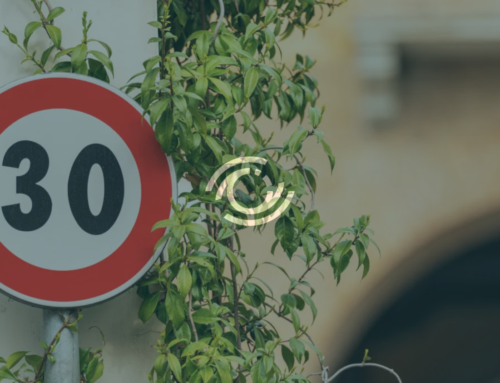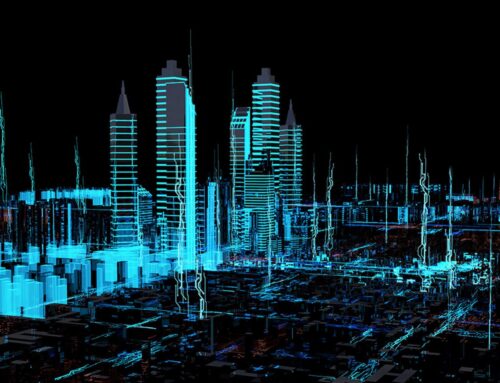Wild parking and two-seater cars: a challenge for Artificial Intelligence
Our cities are constantly evolving as are our travel habits. Find out how AI ensures a smarter and more sustainable mobility!
Wild parking and two-seater cars: a challenge for Artificial Intelligence
Our cities are constantly evolving as are our travel habits. Find out how AI ensures a smarter and more sustainable mobility!
Wild parking: a problem for urban mobility
Cities are like people: they have a soul, a heart and, unfortunately, often a parking problem.
A problem that makes us appreciate the mimetic abilities of animals more and more. Especially considering that some cars manage to hide in unexpected places.
Who hasn’t come across a single or two-seater car illegally parked, blocking traffic and creating disruption?
Two-seater cars, with their compact and sporty design, have become increasingly popular in recent years, especially in large cities. Their spread, driven by an increasing focus on sustainability, has brought with it a new kind of problem: wild parking.
Walking through city streets, in fact, it is increasingly easy to find vehicles wild parked. For example, in such a way as to take up half of a parking space or encroach on bike lanes.
This behavior makes it difficult for larger vehicles to circulate, creating dangerous situations for pedestrians and cyclists. In addition, small cars create traffic jams and contribute to urban congestion.
This phenomenon impacts negatively on the life quality in cities, increasing travel times, pollutant emissions and the risk of accidents. Moreover, the proliferation of one- and two-seater cars in already congested areas contributes to several problems. Such as traffic congestion, resulting in delays and increased pollution [1].

What are the reasons for this phenomenon?
The causes are many and complicated.
Firstly, the shortage of public parking spaces, their high cost, and a widespread sense of incivility among drivers. These represent just some of the factors that drive many people to park in irregular ways.
Italy is at the top of the European ranking for number of cars. The observatory reports: 690 every 1,000 citizens, compared to the EU average of 560. Three out of four Italians still continue to travel by car. In fact, 30% of urban traffic involves vehicles looking for parking. Spending an average of a quarter to a half hour a day [2]. Is there a solution?
Artificial intelligence can mitigate the problem of wild parking and improve urban mobility
Artificial intelligence is revolutionizing many industries, and urban parking management is no exception. Beyond to providing advanced tools to address the problem of wild parking, AI is transforming ho cities manage urban mobility.
The smart video sensors identify irregularly parked cars in real time. Leveraging Deep learning algorithms and image recognition, urban areas can be monitored even in low-visibility conditions or in locations that are difficult for enforcement officers to access. These systems detect and classify infractions based on severity, enabling authorities to intervene promptly.
Another key application of AI is predictive analytics. It uses data collected from sensors, cameras and IoT devices to predict traffic patterns and areas prone to illegal parking. By integrating this information with historical data, models can be developed that anticipate parking needs. For example, at specific times of the day or during events and holidays. This approach reduces congestion and improves the overall efficiency of the road network.
Furthermore, AI can be used to optimize the use of existing parking spaces.
For example, through the implementation of smart parking spaces that automatically guide vehicles to the nearest free spaces. This reduces the time and fuel wasted on searching for a space. It also improves the driving experience and decreases air and noise pollution in urban areas.
According to a recent report by McKinsey & Company, the adoption of AI-based technologies could significantly reduce parking-related infractions, therefore improving the quality of life in cities. AI optimizes the use of parking spaces and supports sustainable mobility by incentivizing the use of alternative means of transportation. [3]
Artificial Intelligence stands as the right tool to mitigate the phenomenon of wild parking. In fact, numerous cities around worldwide have already experimented with innovative solutions to improve urban mobility and the lives of citizens.
How are cities revolutionizing parking and traffic?
Different cities around the world are already experimenting with AI-based solutions to enhance urban mobility management. Which ones?
Singapore employs a smart parking system that uses sensors and machine learning algorithms. This system monitors parking space occupancy in real time and guide drivers to free parking spaces [4]. Future Integration with public transport and shared mobility infrastructure promises evensmarter and more sustainable urban ecosystems.
San Francisco, on the other hand, addresses parking challenges in higher-density areas through innovative AI applications. The city’s dynamic pricing program adjusts parking rates based on demand by leveraging data collected from parking sensors. This system incentivizes drivers to park in less congested areas or at less crowded times, contributing to a more balanced distribution of vehicles and reducing congestion. Moreover, mobile app integration facilitates easy location of available parking spaces, improving efficiency and reducing the stress.
These examples show that AI is not just a promise for the future. It is a present-day reality already capable of revolutionizing urban mobility and public space management in cities.
In conclusion, Artificial Intelligence appears as a powerful and flexible solution to solve wild parking and improve urban mobility.
The integration of intelligent parking systems enables vehicles to reach the nearest parking spaces, decreasing traffic congestion and pollutant emissions. In addition, these systems help enhance road safety by freeing up bicycle and pedestrian lanes and making it easier for larger vehicles to move around.
Adopting artificial intelligence not only mitigates the phenomenon of wild parking but is also contributes to the creation of more livable and safer cities.
References:
-
-
- Zhao, A., Dong, J., & Zhou, H. (2020). Self-supervised learning from multi-sensor data for sleep recognition. IEEE Access, 8, 93907-93921
- Missioni Online: Italia e sosta da incubo: 30% del traffico da chi cerca parcheggi. Online version: https://link.springer.com/article/10.1007/s43681-021-00043-6
- InnovationCity: McKinsey: sfide e soluzioni per la smart mobility nelle aree urbane. Online Version: https://www.innovationcity.it/news/436/mckinsey-sfide-e-soluzioni-per-la-smart-mobility-nelle-aree-urbane.html
- Smart Nation Singapore. Online Version: https://www.smartnation.gov.sg/
-
© Copyright 2012 – 2024 | All Rights Reserved
Author: Christian Iannone, Graduate of Sapienza University
Wild parking: a problem for urban mobility
Cities are like people: they have a soul, a heart and, unfortunately, often a parking problem.
A problem that makes us appreciate the mimetic abilities of animals more and more. Especially considering that some cars manage to hide in unexpected places.
Who hasn’t come across a single or two-seater car illegally parked, blocking traffic and creating disruption?
Two-seater cars, with their compact and sporty design, have become increasingly popular in recent years, especially in large cities. Their spread, driven by an increasing focus on sustainability, has brought with it a new kind of problem: wild parking.
Walking through city streets, in fact, it is increasingly easy to find vehicles wild parked. For example, in such a way as to take up half of a parking space or encroach on bike lanes.
This behavior makes it difficult for larger vehicles to circulate, creating dangerous situations for pedestrians and cyclists. In addition, small cars create traffic jams and contribute to urban congestion.
This phenomenon impacts negatively on the life quality in cities, increasing travel times, pollutant emissions and the risk of accidents. Moreover, the proliferation of one- and two-seater cars in already congested areas contributes to several problems. Such as traffic congestion, resulting in delays and increased pollution [1].

What are the reasons for this phenomenon?
The causes are many and complicated.
Firstly, the shortage of public parking spaces, their high cost, and a widespread sense of incivility among drivers. These represent just some of the factors that drive many people to park in irregular ways.
Italy is at the top of the European ranking for number of cars. The observatory reports: 690 every 1,000 citizens, compared to the EU average of 560. Three out of four Italians still continue to travel by car. In fact, 30% of urban traffic involves vehicles looking for parking. Spending an average of a quarter to a half hour a day [2]. Is there a solution?
Artificial intelligence can mitigate the problem of wild parking and improve urban mobility
Artificial intelligence is revolutionizing many industries, and urban parking management is no exception. Beyond to providing advanced tools to address the problem of wild parking, AI is transforming ho cities manage urban mobility.
The smart video sensors identify irregularly parked cars in real time. Leveraging Deep learning algorithms and image recognition, urban areas can be monitored even in low-visibility conditions or in locations that are difficult for enforcement officers to access. These systems detect and classify infractions based on severity, enabling authorities to intervene promptly.
Another key application of AI is predictive analytics. It uses data collected from sensors, cameras and IoT devices to predict traffic patterns and areas prone to illegal parking. By integrating this information with historical data, models can be developed that anticipate parking needs. For example, at specific times of the day or during events and holidays. This approach reduces congestion and improves the overall efficiency of the road network.
Furthermore, AI can be used to optimize the use of existing parking spaces.
For example, through the implementation of smart parking spaces that automatically guide vehicles to the nearest free spaces. This reduces the time and fuel wasted on searching for a space. It also improves the driving experience and decreases air and noise pollution in urban areas.
According to a recent report by McKinsey & Company, the adoption of AI-based technologies could significantly reduce parking-related infractions, therefore improving the quality of life in cities. AI optimizes the use of parking spaces and supports sustainable mobility by incentivizing the use of alternative means of transportation. [3]
Artificial Intelligence stands as the right tool to mitigate the phenomenon of wild parking. In fact, numerous cities around worldwide have already experimented with innovative solutions to improve urban mobility and the lives of citizens.
How are cities revolutionizing parking and traffic?
Different cities around the world are already experimenting with AI-based solutions to enhance urban mobility management. Which ones?
Singapore employs a smart parking system that uses sensors and machine learning algorithms. This system monitors parking space occupancy in real time and guide drivers to free parking spaces [4]. Future Integration with public transport and shared mobility infrastructure promises evensmarter and more sustainable urban ecosystems.
San Francisco, on the other hand, addresses parking challenges in higher-density areas through innovative AI applications. The city’s dynamic pricing program adjusts parking rates based on demand by leveraging data collected from parking sensors. This system incentivizes drivers to park in less congested areas or at less crowded times, contributing to a more balanced distribution of vehicles and reducing congestion. Moreover, mobile app integration facilitates easy location of available parking spaces, improving efficiency and reducing the stress.
These examples show that AI is not just a promise for the future. It is a present-day reality already capable of revolutionizing urban mobility and public space management in cities.
In conclusion, Artificial Intelligence appears as a powerful and flexible solution to solve wild parking and improve urban mobility.
The integration of intelligent parking systems enables vehicles to reach the nearest parking spaces, decreasing traffic congestion and pollutant emissions. In addition, these systems help enhance road safety by freeing up bicycle and pedestrian lanes and making it easier for larger vehicles to move around.
Adopting artificial intelligence not only mitigates the phenomenon of wild parking but is also contributes to the creation of more livable and safer cities.
References:
-
-
- Zhao, A., Dong, J., & Zhou, H. (2020). Self-supervised learning from multi-sensor data for sleep recognition. IEEE Access, 8, 93907-93921
- Missioni Online: Italia e sosta da incubo: 30% del traffico da chi cerca parcheggi. Online version: https://link.springer.com/article/10.1007/s43681-021-00043-6
- InnovationCity: McKinsey: sfide e soluzioni per la smart mobility nelle aree urbane. Online Version: https://www.innovationcity.it/news/436/mckinsey-sfide-e-soluzioni-per-la-smart-mobility-nelle-aree-urbane.html
- Smart Nation Singapore. Online Version: https://www.smartnation.gov.sg/
-
© Copyright 2012 – 2024 | All Rights Reserved
Author: Christian Iannone, Graduate of Sapienza University
Wild parking: a problem for urban mobility
Cities are like people: they have a soul, a heart and, unfortunately, often a parking problem.
A problem that makes us appreciate the mimetic abilities of animals more and more. Especially considering that some cars manage to hide in unexpected places.
Who hasn’t come across a single or two-seater car illegally parked, blocking traffic and creating disruption?
Two-seater cars, with their compact and sporty design, have become increasingly popular in recent years, especially in large cities. Their spread, driven by an increasing focus on sustainability, has brought with it a new kind of problem: wild parking.
Walking through city streets, in fact, it is increasingly easy to find vehicles wild parked. For example, in such a way as to take up half of a parking space or encroach on bike lanes.
This behavior makes it difficult for larger vehicles to circulate, creating dangerous situations for pedestrians and cyclists. In addition, small cars create traffic jams and contribute to urban congestion.
This phenomenon impacts negatively on the life quality in cities, increasing travel times, pollutant emissions and the risk of accidents. Moreover, the proliferation of one- and two-seater cars in already congested areas contributes to several problems. Such as traffic congestion, resulting in delays and increased pollution [1].

What are the reasons for this phenomenon?
The causes are many and complicated.
Firstly, the shortage of public parking spaces, their high cost, and a widespread sense of incivility among drivers. These represent just some of the factors that drive many people to park in irregular ways.
Italy is at the top of the European ranking for number of cars. The observatory reports: 690 every 1,000 citizens, compared to the EU average of 560. Three out of four Italians still continue to travel by car. In fact, 30% of urban traffic involves vehicles looking for parking. Spending an average of a quarter to a half hour a day [2]. Is there a solution?
Artificial intelligence can mitigate the problem of wild parking and improve urban mobility
Artificial intelligence is revolutionizing many industries, and urban parking management is no exception. Beyond to providing advanced tools to address the problem of wild parking, AI is transforming ho cities manage urban mobility.
The smart video sensors identify irregularly parked cars in real time. Leveraging Deep learning algorithms and image recognition, urban areas can be monitored even in low-visibility conditions or in locations that are difficult for enforcement officers to access. These systems detect and classify infractions based on severity, enabling authorities to intervene promptly.
Another key application of AI is predictive analytics. It uses data collected from sensors, cameras and IoT devices to predict traffic patterns and areas prone to illegal parking. By integrating this information with historical data, models can be developed that anticipate parking needs. For example, at specific times of the day or during events and holidays. This approach reduces congestion and improves the overall efficiency of the road network.
Furthermore, AI can be used to optimize the use of existing parking spaces.
For example, through the implementation of smart parking spaces that automatically guide vehicles to the nearest free spaces. This reduces the time and fuel wasted on searching for a space. It also improves the driving experience and decreases air and noise pollution in urban areas.
According to a recent report by McKinsey & Company, the adoption of AI-based technologies could significantly reduce parking-related infractions, therefore improving the quality of life in cities. AI optimizes the use of parking spaces and supports sustainable mobility by incentivizing the use of alternative means of transportation. [3]
Artificial Intelligence stands as the right tool to mitigate the phenomenon of wild parking. In fact, numerous cities around worldwide have already experimented with innovative solutions to improve urban mobility and the lives of citizens.
How are cities revolutionizing parking and traffic?
Different cities around the world are already experimenting with AI-based solutions to enhance urban mobility management. Which ones?
Singapore employs a smart parking system that uses sensors and machine learning algorithms. This system monitors parking space occupancy in real time and guide drivers to free parking spaces [4]. Future Integration with public transport and shared mobility infrastructure promises evensmarter and more sustainable urban ecosystems.
San Francisco, on the other hand, addresses parking challenges in higher-density areas through innovative AI applications. The city’s dynamic pricing program adjusts parking rates based on demand by leveraging data collected from parking sensors. This system incentivizes drivers to park in less congested areas or at less crowded times, contributing to a more balanced distribution of vehicles and reducing congestion. Moreover, mobile app integration facilitates easy location of available parking spaces, improving efficiency and reducing the stress.
These examples show that AI is not just a promise for the future. It is a present-day reality already capable of revolutionizing urban mobility and public space management in cities.
In conclusion, Artificial Intelligence appears as a powerful and flexible solution to solve wild parking and improve urban mobility.
The integration of intelligent parking systems enables vehicles to reach the nearest parking spaces, decreasing traffic congestion and pollutant emissions. In addition, these systems help enhance road safety by freeing up bicycle and pedestrian lanes and making it easier for larger vehicles to move around.
Adopting artificial intelligence not only mitigates the phenomenon of wild parking but is also contributes to the creation of more livable and safer cities.
References:
-
-
- Zhao, A., Dong, J., & Zhou, H. (2020). Self-supervised learning from multi-sensor data for sleep recognition. IEEE Access, 8, 93907-93921
- Missioni Online: Italia e sosta da incubo: 30% del traffico da chi cerca parcheggi. Online version: https://link.springer.com/article/10.1007/s43681-021-00043-6
- InnovationCity: McKinsey: sfide e soluzioni per la smart mobility nelle aree urbane. Online Version: https://www.innovationcity.it/news/436/mckinsey-sfide-e-soluzioni-per-la-smart-mobility-nelle-aree-urbane.html
- Smart Nation Singapore. Online Version: https://www.smartnation.gov.sg/
-
© Copyright 2012 – 2024 | All Rights Reserved
Author: Christian Iannone, Graduate of Sapienza University













superb post.Never knew this, thanks for letting me know.